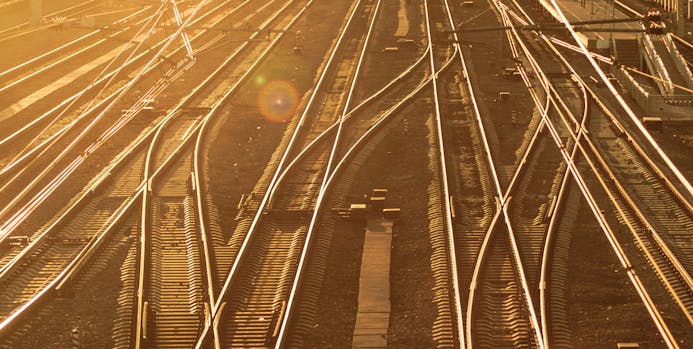Predictive maintenance of critical infrastructure
2020-07-28
2 min read
Predictive maintenance strategies can be used to minimise unplanned downtime and disruptions, saving time and money along the way. This makes it easy to see why the global predictive maintenance market is expected to reach $11 billion by 2022.
Great Britain’s railway system is one of the busiest and densest in Europe, consisting of nearly 10,000 miles of tracks. Problems on railway lines can lead to anything from passenger discomfort to train delays, or even, in extreme cases, full line closures that could disrupt the lives of thousands of people. Needless to say, the UK’s railways are a critical piece of infrastructure and the amount of disruption and downtime that they experience must be kept to a minimum.
Maintaining a large, complex system like railways may seem like a daunting task, but it is vital to keeping the trains running with minimal disruptions.
Predictive maintenance
Predictive maintenance strategies are used to determine the condition of any assets and predict when maintenance should be performed. When executed correctly, this approach can be used to minimise any unplanned, costly downtime. Gathering data over time through a series of sensors is a simple but effective basis for condition monitoring and any subsequent predictive maintenance it leads to.

An effective predictive maintenance strategy hinges on being able to source new, used or obsolete replacement parts quickly and reliably. Having a strong relationship with an industrial parts supplier can be the key difference between having a predictive maintenance programme that struggles and one that flourishes.
Hitting the tracks
The support conditions for a railway track can vary for several reasons such as contaminated ballast, drainage problems or gaps between the sleeper and ballast layer. If these are not regularly monitored and properly maintained, they can develop into voids underneath the tracks. These can then cause substantial delays or even full line closures in severe cases.
The Siemens Tracksure track monitoring system can identify voids underneath railway tracks from sensors in the vehicle cab that detect acceleration response. The sensors can also identify the type of track asset that the void is located underneath and indicate the severity of the void.
Installation of the Tracksure sensors into multiple trains offers the possibility of automatically monitoring the rail network’s condition. Furthermore, as each track section is monitored by several trains it increases the accuracy and reliability of results, while removing any false alarms. By gathering this data, any issues along the tracks can be identified and maintenance planned for a time where it will cause minimal disruption, avoiding more costly, and potentially dangerous, issues from arising.
Long before Japan’s bullet trains were imagined, the UK’s rail system was the envy of the world. Now, that historic network has aged and the original equipment manufacturers may no longer produce the parts used throughout the network. This makes careful obsolescence management a key part of any effective maintenance strategy.



